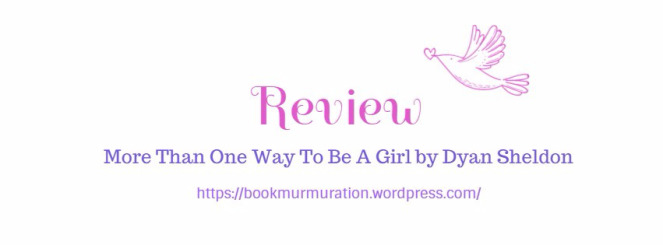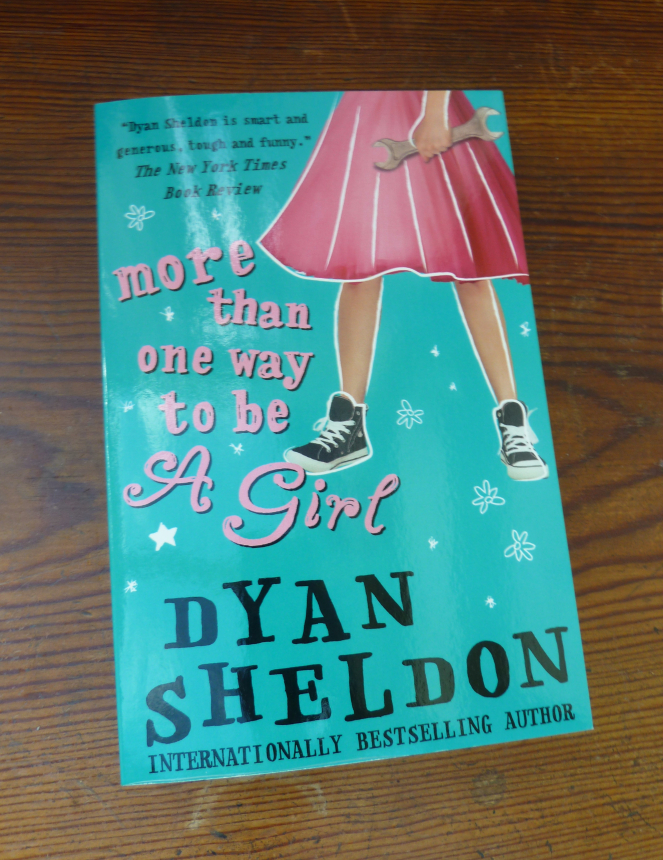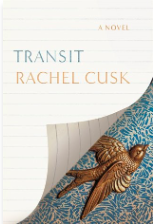

Extract:
‘Bet? Are you serious? You mean we switch around? You’re going to wear make-up and dresses, and I’m going to look like someone who will never get a date. Is that what you mean?’
That about covered it.
‘Yes, I’ll go the girly, look-at-me image, and you’ll go for the androgynous talk-to-me one. And we’ll see who cracks first.
Zizi and I both like to be right, which means we’d made plenty of bets before. How far could Zizi walk in her new heels. How long could I go without starting an argument.I bet her that she couldn’t be on time two days in a row. She bet me that I couldn’t go shopping with her for an entire afternoon and not complain once. As far as winning went, the judges agreed that we broke even.
(More than One Way to be a Girl by Dyan Sheldon. P127.)
 Synopsis:
Synopsis:
ZiZi swears she would be lost without her make-up. Girlish charm is what gets her buy. It’s the reason guys do things for her, the reason her boss gives her the best tables. Customers like a pretty face. Loretta reckons ZiZi is better than that. She reckons women have been oppressed, and marriage is an institute, and lots of other things she is prepared to shout down people’s throats. She’s a person, not a girl.
The pair come to loggerheads, and make a bet. They will swap personalities for a month, and see who caves in first. Loretta adopts an hour-long make-up routine, while ZiZi chops all her hair off. It’s a sociology experiment. What could go wrong?
As it turns out, lots of things. Both girls observe the reactions of the guys around them, and start to think differently about the reasons they behave as they do. Meanwhile, cute star-watcher Gabe has gone off Loretta, while ZiZi’s crush claims to be out of town.
The girls compare notes and come to a striking conclusion in a Summer of mayhem.
 Review:
Review:
A feisty, feminist read which has me ready to march for equality.
I related to Loretta: the girl who has noticed and researched the issue, but failed to pick up on social smarts. Are they so smart? Here’s what I love about the dual perspective: the characters challenge each other, then they are challenged by their own experiences, until they come together and draw their conclusions.
Not convinced it’s for you? The book tells it like it is, but it is anything but a rant. Whatever your stance on gender equality, there will be a moment here where you recognise yourself, and where you see your own (apparently harmless) actions in the bigger picture. That time you smiled nicely to ‘pacify’ a guy? The time a guy threw himself out to ‘help’ you with something as onerous as, say, opening a train door? ZiZi and Loretta experience it all, and the reader cringes at their own experiences.
Both girls encounter problems in their summer jobs: Loretta works in a DIY shop, and is consigned to the counter and kettle when she changes her appearance to look more feminine. ZiZi experiences the opposite: her boss hires his waitresses for their blonde hair and perfect smile. ZiZi works five times as hard, for none of the approval. Perhaps these scenarios are exaggerated, but both stories highlight different issues about the way women are perceived in society.
The differences between ZiZi and Loretta show the divide which occurs in adolescence, when many girls feel pressured to focus on their looks. It also makes a statement about clothing choices: if a woman chooses to dress up, why should it attract male attention?
I found the ending abrupt – the last part of the story centres on a wedding, which is a hilarious setting for the theme, but I would have liked to see more of Zizi and Loretta’s life after their experiment. The girls draw a satisfying conclusion, but the story ends right there. I appreciate why this decision was made, but I would have liked to see how their conclusion affected them into the new school year. What had changed? Were those changes superficial, or did they have an impact on other people? That said, I enjoyed every second of what was there, and will sniff out more Dyan Sheldon for contemporary YA with a bite.
Advertisements Share this:





